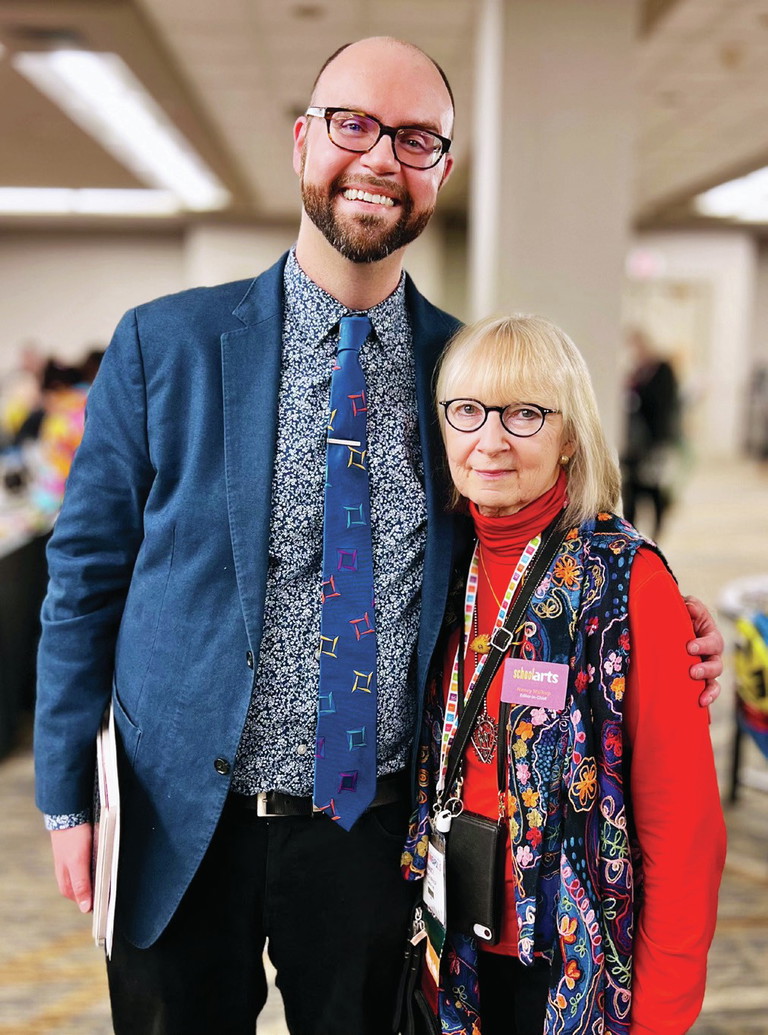EDITOR'S LETTER: SUMMER 2024
Creativity

Nancy and Julian Wade, president of Davis and publisher of SchoolArts, admiring the creativity at the NAEA National Convention last April.
"The desire to create is one of the deepest yearnings of the human soul. No matter our talents, education, backgrounds, or abilities, we each have an inherent wish to create something that did not exist before."
—Dieter F. Uchtdorf
Have you ever noticed how often artists seem to live to a ripe old age? I believe that famous figures of art history like Alma Thomas (87), Elizabeth Catlett (96), Michelangelo (89), Andrew Wyeth (92), Élisabeth Louise Vigée Le Brun (87), Louise Nevelson (89), Maria Martinez (93), and Georgia O’Keeffe (99), to name a few, lived long lives because they had a compelling reason that motivated them to get up and make art every day—that reason was the desire to create.
Two Artists on Creativity
Brené Brown, noted author of Atlas of the Heart: Mapping Meaningful Connection and the Language of Human Experience (Random House, 2021), and other popular books, and host of the podcasts Unlocking Us and Dare to Lead, has a wealth of resources on her website to help teachers encourage creativity in their students. Daring Classrooms: Building Brave Spaces for Students has readings, integration ideas, learning lab videos, posters, quote cards, and more.
Georgia O’Keeffe believed that “To create one’s own world takes courage.” Through our roles as art teachers, we are in a position to help our students gather that courage to create. Extensive educational materials from the Georgia O’Keeffe Museum can be found here.
In This Issue
Creativity takes many forms in this month’s issue. In Julia L. Hovanec’s “Friendly Hats”, young students design a hat for a friend.
At the elementary level, in “Unleashing Creativity”, Jessica Apple’s students explore an engaging drawing game inspired by food doodles.
Kate Gormley’s middle-school article “Form & Function” describes an end-of-year ceramics challenge in which students design imaginative and functional forms.
In Megan Newton’s “A Zinester’s Guide to Creativity”, high-school students investigate zines—self-published mini-books that allow them to explore ideas and concepts on their own terms.
Many thanks to Tracey Hunter-Doniger, Stephanie Danker, and Darden Bradshaw from the NAEA Research Commission’s Professional Learning through Research Group for co-editing and contributing to this issue!
Nancy Walkup, Editor-in-Chief